Let’s put some peeps in our paintings. Figures can tell a story, show scale, or add a touch of color, but they need to express life. This lesson covers three aspects of making your figures belong in the landscape: scale, proportion, and gesture.
Part 2 of “Peeps in the Landscape” will be in two weeks. Even though we are still in the midst of this pandemic, our governments have begun to open up and most of us don’t need to STAY as much. I’ll keep posting free Staycation Art Lessons, but, during this less restricted phase, I’ll publish every other Friday.
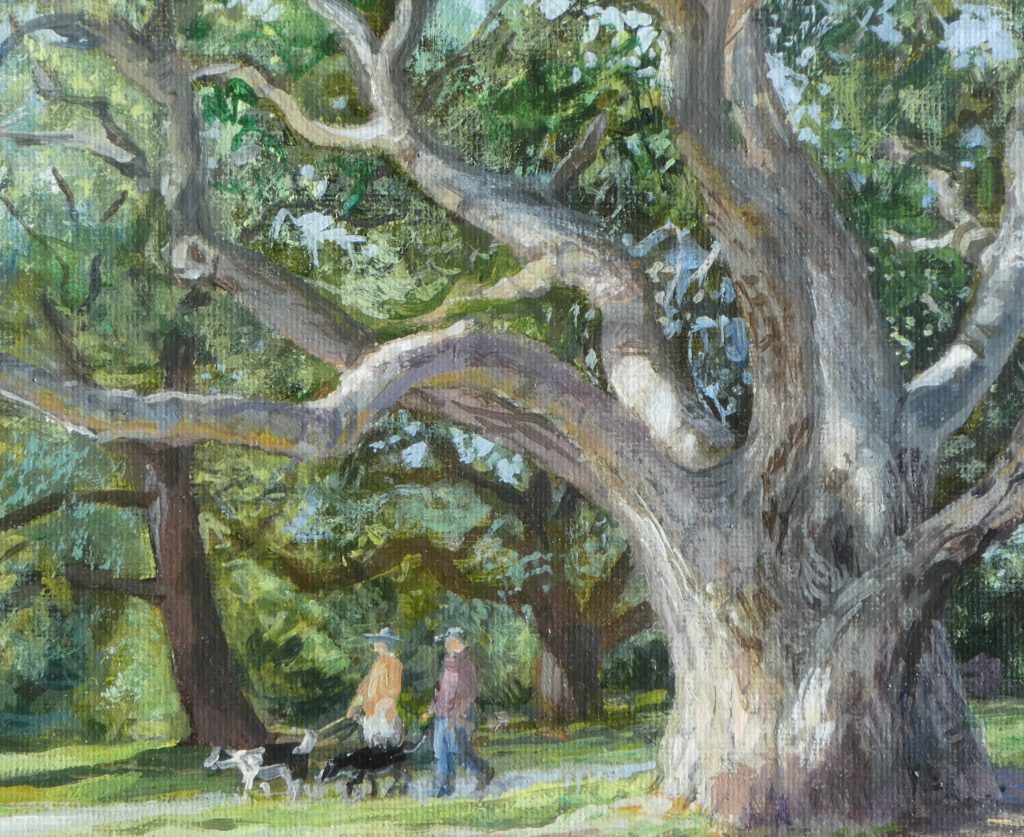
Detail of 8X10 acrylic “Irvine Oaks” Lillian Kennedy
SCALE: Your peeps need to be the right size. When you are landscape drawing, get in the habit of marking the height of people when they pass through. Observe them at different distances and make a light line on your paper to indicate their height.
Note your eye level (what is level with your eyes) If you are standing, your eyes will be at the same level as the eyes of anyone else who is your height no matter how far away from you they are standing. They will get smaller because the line of the ground rises up to meet the eye level line at the horizon. See the illustration below. People reclining on beach towels are included to show how perspective works with horizontal shapes.
You want to understand the basics in order to get your figures scaled correctly.
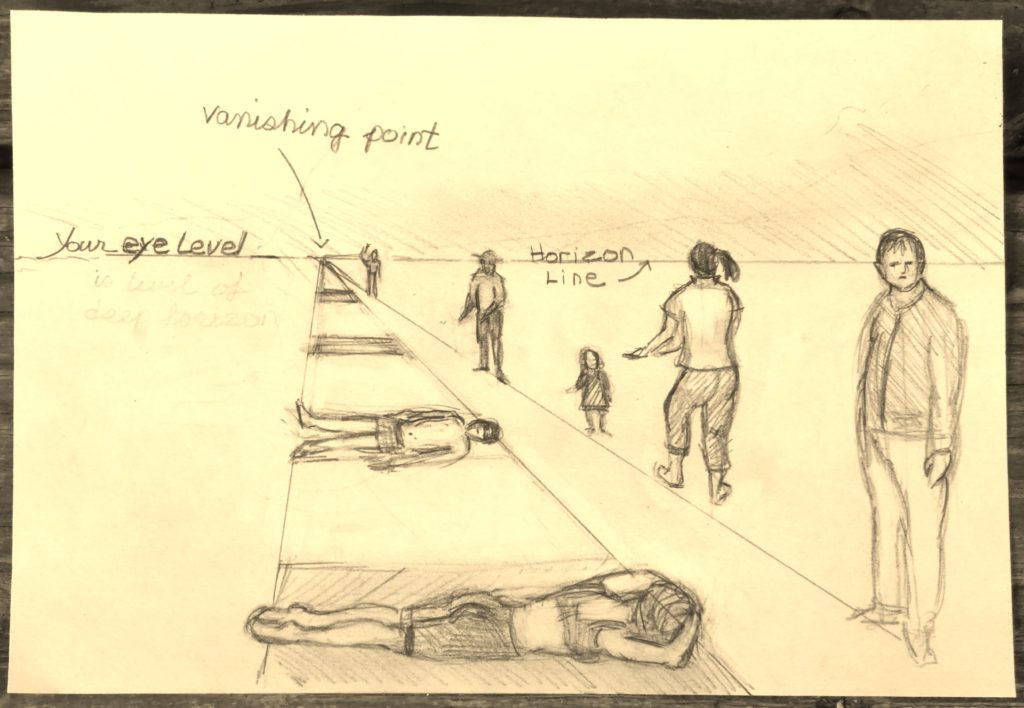
Proportions: You want your figures, even if tiny, to have reasonable proportions. The illustration below gives you some pointers. Knowing things such as the fact that elbows come approximately to the waist can help when making up figures in your drawings. There are only a few basics to keep in mind, so it’s worth some study if you plan to do lots of peeps.
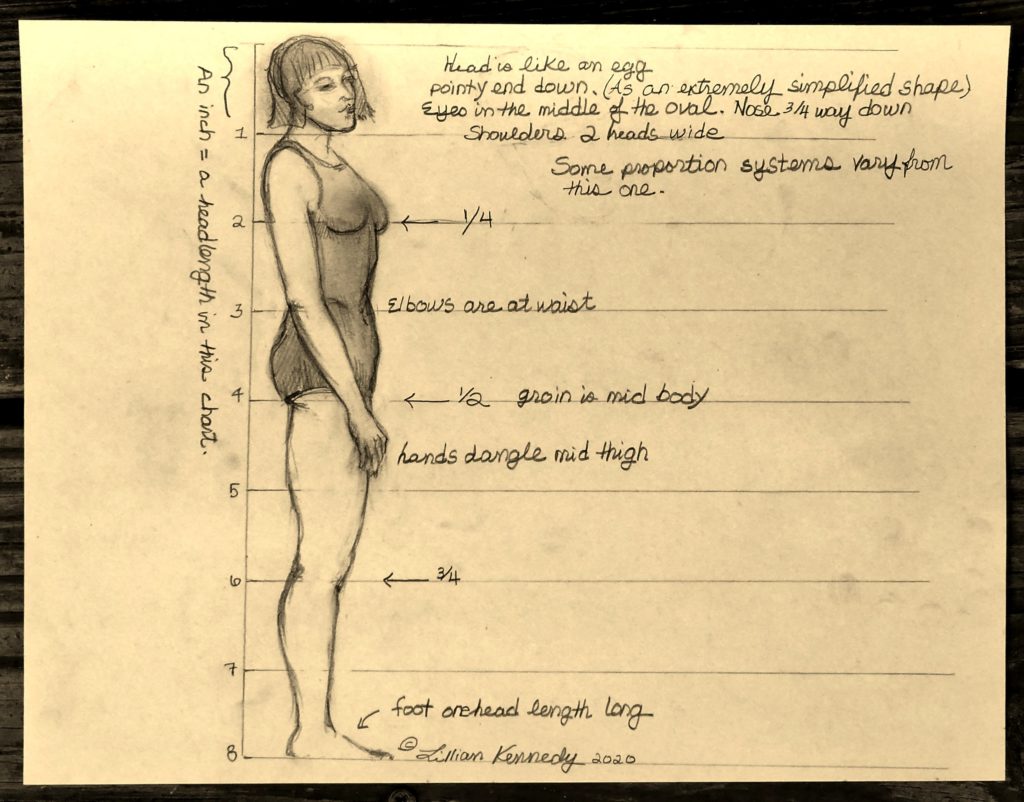
Gesture: Gesture drawings are quick studies in which you draw what you feel is the essential ACTION and life expression within the momentary pose of your subject.
Aim to draw what the model is DOING; the bending and twisting, the tension or relaxation of the muscles.
FEEL the movement of the model in your own body. Feel the movement of the whole form! Check out Gesture for more on the topic. You can never do too much gesture drawing and it’s much more fun than learning perspective for most artful souls.
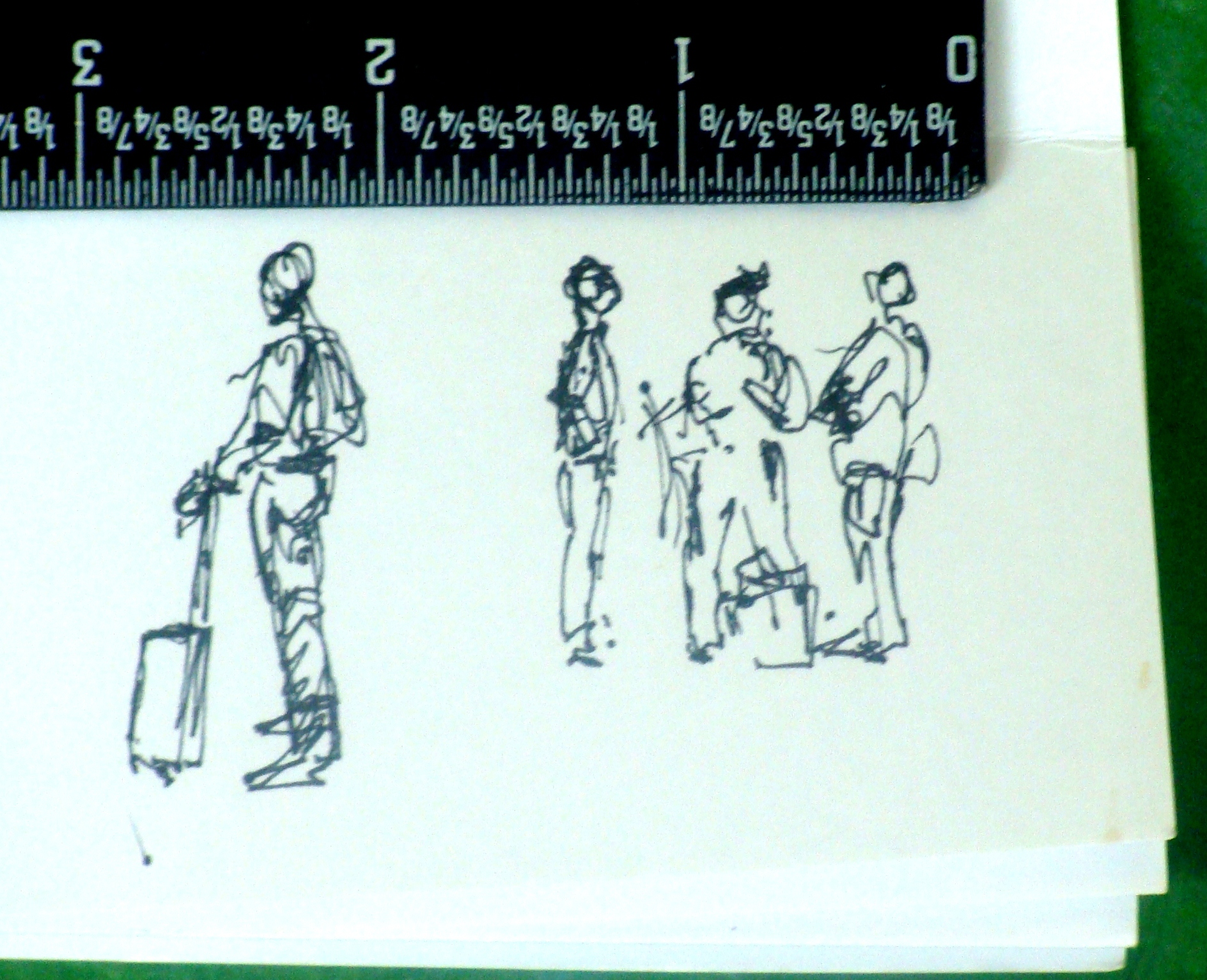
Below is a painting done when my style was much looser. You can see how Scale, Proportion, and Gesture are all involved.
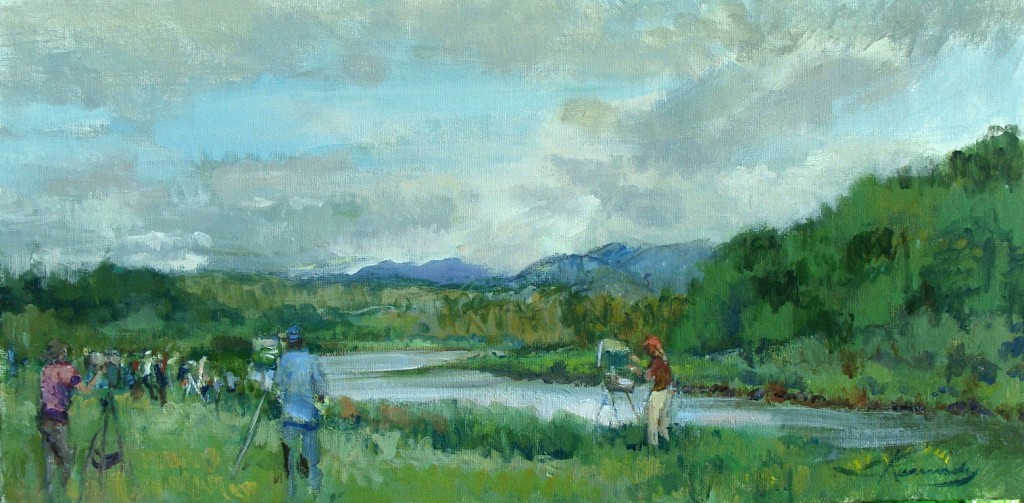
painted quickly during the first Plein Air Magazine Invitational
Have fun and see you in two weeks!

Another wonderful lesson. This post will be one to treasure and read over and over. So much helpful information! My sister always liked my paintings with figures better than unoccupied landscapes. She felt that the presence of a person brought her emotionally into the landscape. I thought it took guts to include a passing figure, but after reading your post, I realize it takes knowledge about perspective, scale, proportion and gesture! I love your painting and the figures in the Plein air invitational painting! Thanks so much. Glad to hear that Vermont is opening up more.
Hi Lillian,
Your perspective lessons remind me to relearn the right way of doing it after years of “eye balling” when I was in a professional field.
I like the interesting way you teach online.
Thank you. Miss you.
Joyse
Pingback: Staycation Series #9: Putting Figures in Your Landscape Paintings (Part 2) | Weekly Art Lesson
Lillian, somehow you always seem to meet me where I am at. Or it may be that I am ready to absorb what you were teaching at the moment you were teaching it. But either way there’s a reason why you were the best teacher I’ve ever had. This lesson is a perfect illustration of that. I have recently added figures to my paintings and though they are tiny they need to be correct. I think you for this lesson; it’s been most helpful.
Thank you!